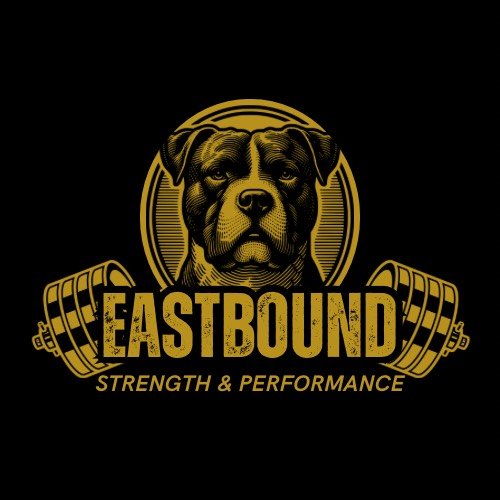Max Effort Lower: Developing Absolute Strength from the Ground Up
At Eastbound Strength & Performance, our Max Effort Lower Body training is one of the most important pillars of our Conjugate-based athletic development system. Following the teachings of Westside Barbell, this day is dedicated to building absolute strength in the muscles that matter most for sprinting, jumping, cutting, and contact: the posterior chain, hips, and trunk.
The Purpose of Max Effort Lower Max Effort (ME) training develops the nervous system's ability to recruit high-threshold motor units under load. We rotate heavy compound lifts each week and train to a 1-rep or 5-rep max on that variation. This targets maximal force output and neurological efficiency, not just muscular endurance.
For field and court athletes, absolute strength is foundational. It sets the ceiling for speed, explosiveness, and resilience. Without strength, power has nowhere to grow.
Common Max Effort Lower Movements:
Safety Bar Squat to Box
Deadlifts (Sumo, Conventional, Deficit, Rack Pull)
Front Squats
Anderson Squats or Pin Squats
Good Mornings (Straight Bar, Safety Bar)
Trap Bar Deadlifts
Cambered Bar Box Squats
We select movements based on the athlete’s structure, injury history, and sport. Variations with chains and bands (accommodating resistance) are often used to overload the top of the lift and develop force throughout the full range of motion.
Why We Use Bands and Chains
Bands add ascending resistance that forces athletes to accelerate through the entire lift.
Chains add load gradually as the bar rises, training strength at lockout and improving stability.
Both tools train compensatory acceleration and rate of force development—key athletic traits.
How Max Effort Training Transfers to Sport:
Acceleration: Strong hips and hamstrings produce more force into the ground.
Change of Direction: A strong trunk and posterior chain help absorb and redirect force.
Injury Resilience: Controlled exposure to heavy loads builds joint and tendon durability.
Vertical & Horizontal Jumping: Greater absolute strength equals more explosive output.
Accessory Work Focuses On:
Posterior chain: hamstrings, glutes, spinal erectors
Single-leg work for balance and knee health
Abdominal and oblique training for trunk stiffness
Reverse hypers, sled drags, back extensions
Progression and Recovery Because ME work is so demanding, we only perform one true maximal effort lift per lower session. The rest of the session supports recovery and reinforces muscular weaknesses. We aim to break records in variation lifts—not to chase personal records blindly.
Sample Max Effort Lower Day:
Safety Bar Box Squat to 1RM
Bulgarian Split Squat (3x6/side)
Seated Box Jumps holding weight (4x10)
Sled Drag (4x down and back 40 yards )
Reverse Hyper (4x12)
Weighted Planks or Ab Rollouts (3x15-20)
In Summary: Max Effort Lower days are about building strength that translates. Athletes need to produce and absorb high levels of force in every sport. This day trains that capacity safely, systematically, and with long-term progression in mind.
We don’t guess. We train with intent, and we build monsters from the ground up.

